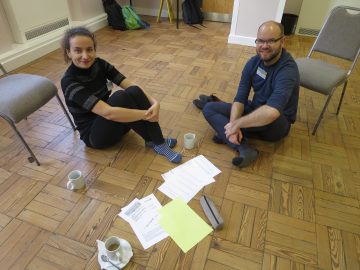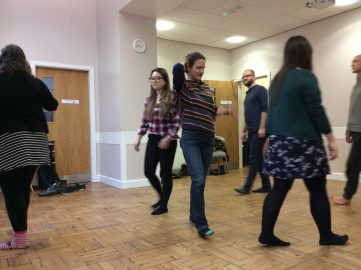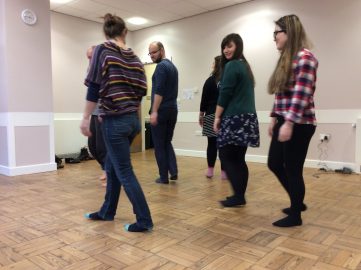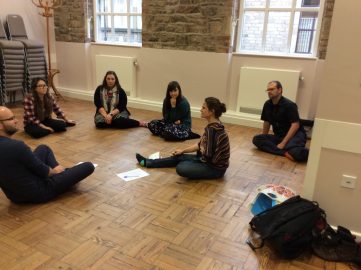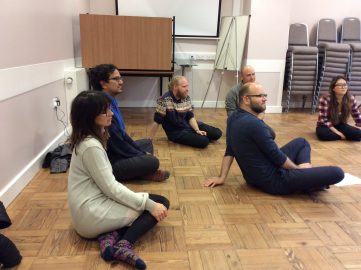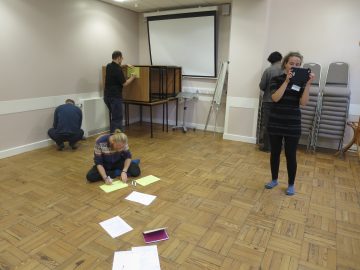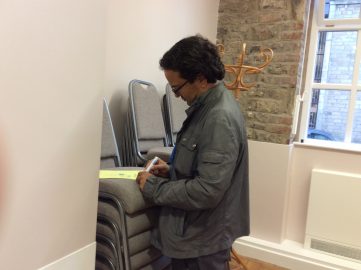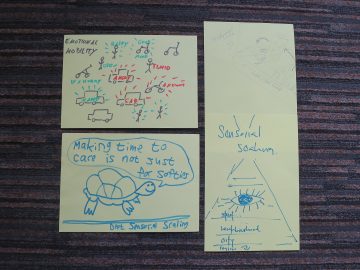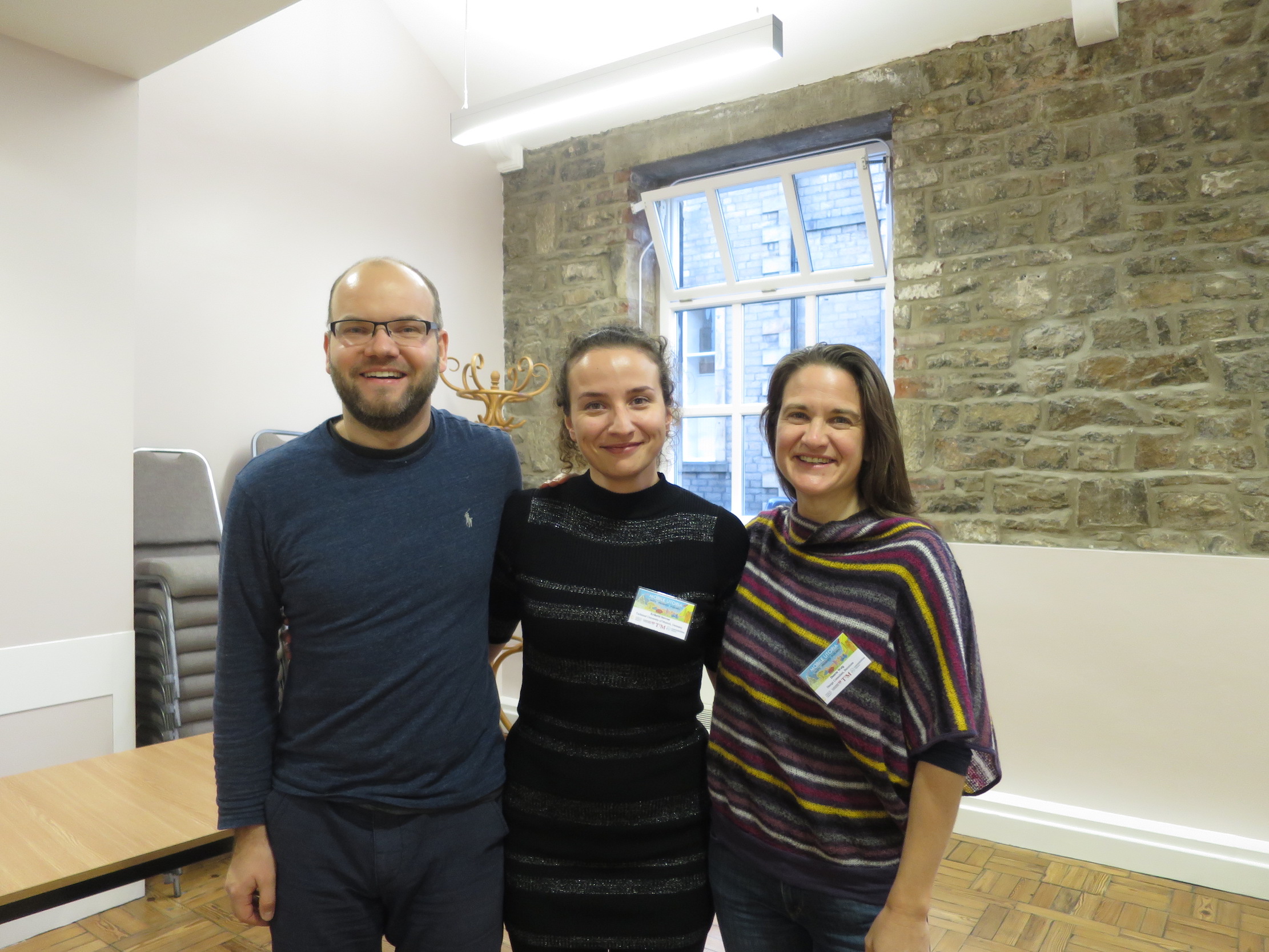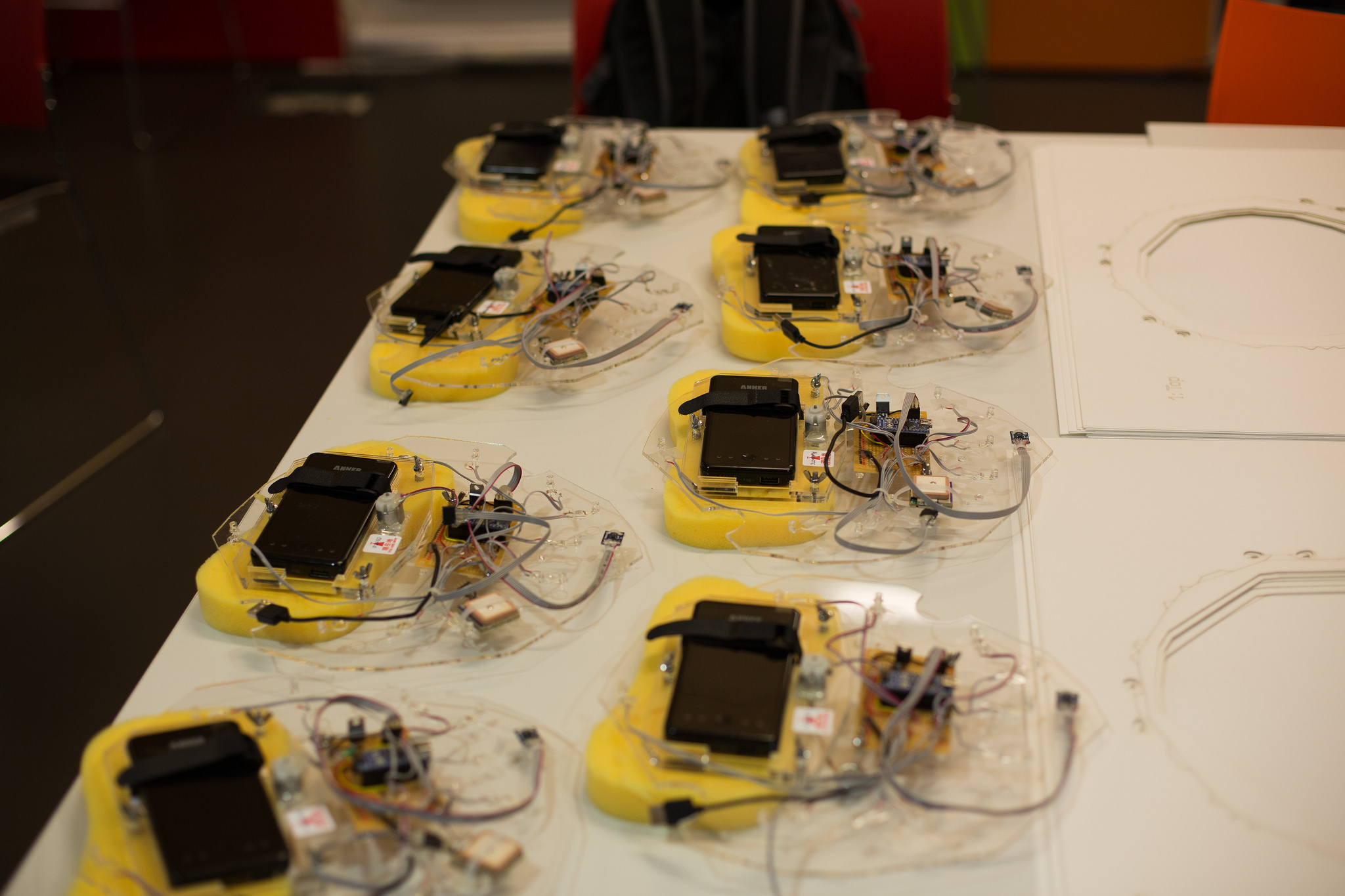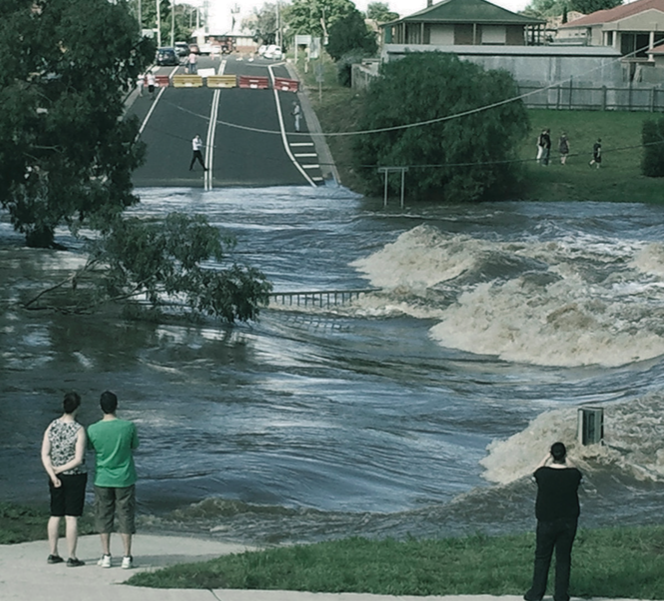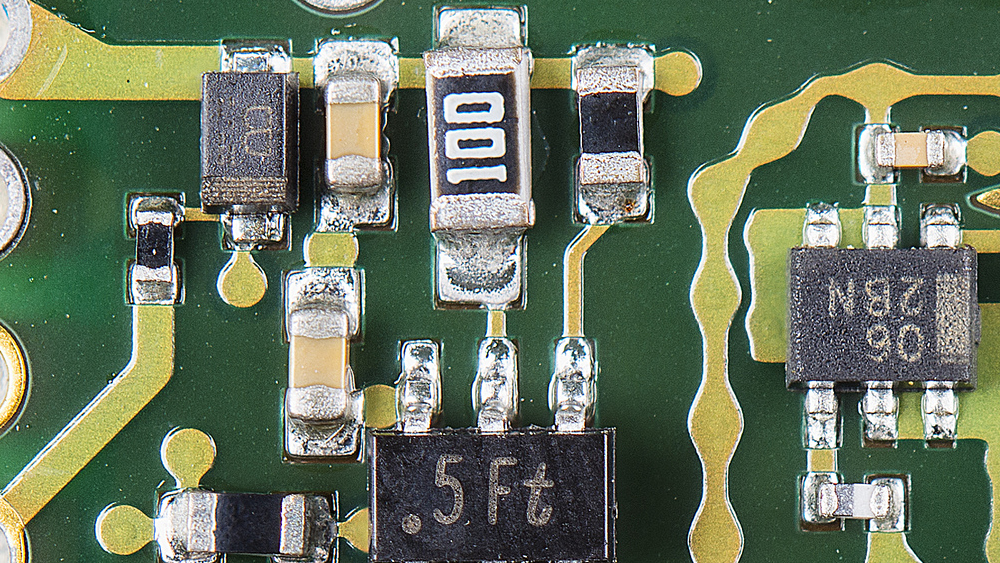Developing new transport technologies and working better with the senses we already have as humans – Combining the two approaches was considered key to improving how we move in urban transport situations, by the participants of the Dance Your Vehicle: Becoming Sensicle workshop. The workshop was part of the ‘Mobile Utopia Experiments’ in Lancaster in November 2017. In this article, Tauri Tuvikene shares his impressions of the day and those of fellow participant Eriketti Servou.
The ‘Becoming Sensicle’ workshop, held in Lancaster’s Cornerstone Cafe on November 1st, 2017, from 1 – 5pm, was one of 12 experiments that took place before the ‘Mobile Utopia’ conference at Lancaster University. The experiment explored how humans move in traffic situations, by experimenting with how human bodies interact in an indoor walking practice. Abstracting spaces of traffic in this manner, brought to mind models used by traffic engineers to imagine the ways in which vehicles use space: how adding an extra lane moves traffic in certain ways, or how adding extra seconds of red light triggers a traffic jam. Yet, such behaviouralist models of vehicle movement are often as devoid of pedestrians as they are devoid of the sensorial bodies of human beings.
In the workshop, under the guidance of Doerte Weig, and with help from Eriketti Servou and myself as members of the Mobile Utopia Bonfire School, the workshop participants moved and walked to explore pedestrian negotiation and spatial interaction—let’s call it traffic—in a room of about 5x5m2 in the Cornerstone Cafe. Most of us were new to such topics, three even just stepping in from the street, unaware of any mobilities’ theory or understandings of utopia framing the workshop. Doerte’s experiment made us all aware of our senses, and the very ways in which our bodies see, hear and feel, that is—more abstractly—sense others around us when we move.
We did various exploratory exercises. We simply walked around avoiding bumping into one another (it sounds simple but requires attentiveness). We got to pass other persons on the right, which created quite a lot of hustle and bustle, even if we were not that densely packed in the space. We were asked to not just walk, but to describe whatever we saw around us and to do it aloud, so everybody could hear. With this exercise, the room filled with murmurs as we started to talk about the colour of walls, or the events taking place outside the windows. Our pace slowed down and we drifted away from each other, looking constantly around as we were muttering words. It was a strange kind of indoor stroll.
A new task we got—to move backwards—required to look out for each other, which was a complex task for bodies lacking eyes on the back of the head, that is, for all human beings. Walking cautiously, our awareness of others was increased; we had to interact with one another. The social character of the space was even further developed with a task to line up to the right of a certain person whenever one from the group made a signal. With this task, we were transformed into a bound group, and ceased to be just individuals negotiating social and physical space on their own even though we were physically located together.
These exercises were not merely a fun way to move around or to just dance, as the name of the workshop suggested; they provided insights in terms of traffic interactions.
First, they revealed that traffic norms are not just written-down rules but are interactional orders made in the practice of moving. The exercises evoked the works of sociologist Erving Goffman, who was interested in the ways in which people interact on pavements, that is, how they make the mobility system work without constant collisions. He noted how walkers have their heads scanning the space in front while they keep a certain distance from those walking in front of them or on the side, in order to remain distinct “mobile-with”-s. As walkers, we have specific bodily skills such as to partly twist our torso and shoulders as we hastily traverse gaps to negotiate densely filled spaces with other “vehicular units”, as Goffman termed it. Our room was not as packed as a pavement in a large city, but similar orders of movement and spatial negotiation were at play.
Second, the workshop revealed the socialisation of space: inserting novel and diverse activities into the existing rules, transforms the space. For instance, the exercises and their underlying rules differed on the scale on which they required conscious interaction and negotiation of movements, as well as whether we just wanted to walk by others or to interact with them even if that interaction was merely forming a line next to them. So differed the space: it was merely a container to go through or it was formed by social bonds between those taking part in the experiment. Furthermore, whereas collisions in our small exercises were not capable of hurting the same way as collisions between cars and pedestrians—between thick and thin skinned vehicular units, to use the language of Goffman—the collisions of walkers are still socially unacceptable.
In this workshop, we became ‘sensicles’, moving-sensing-vehicles to the surrounding space and to each other by dancing traffic. The concluding discussion and drawing session with the participants expanded the tactile experience to imaginations of future mobility and future bodies. Why wouldn’t our bodies and sensorial capacities be greatly improved in the near future to enhance our capacity for and experience of mobility? All the details of how exactly that changes the perception of space, of others and of traffic, are still hard to imagine; sometimes inspiring and sometimes overwhelming. Such experiments, such as the one offered by Doerte, are thus welcome to urge everyone to enhance their imagination of bodies and increased sensorial awareness in future mobilities.
Below are some images of how the workshop developed, thanks to the documentation by Eriketti Servou. Find out more about Doerte’s work at: www.movementresearch.net

